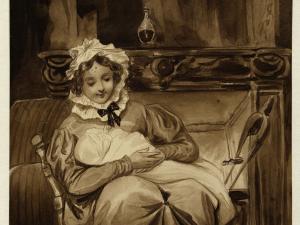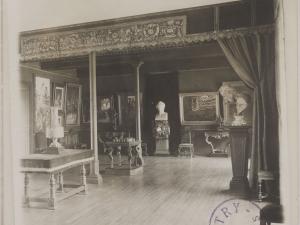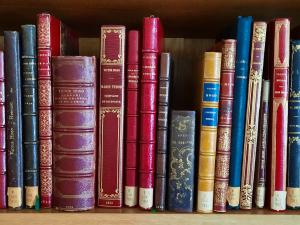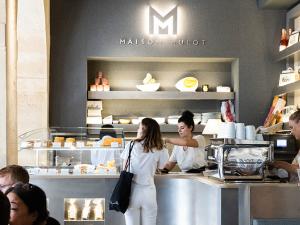Hugobjects and mementos
Victor Hugo was so famous and popular that an unprecedented number of objects of all kinds were made in his image from the 1870s to the 1890s. But these mementos were also created in the privacy of the home, with souvenirs and relics of the poet's life and his family, especially Léopoldine.
These items were included in the museum from the outset, forming a “private museum” alongside the “people's museum”. This layout was the initiative of Paul Meurice and Paul Beuve, who wanted to “build a temple” to the glory of Victor Hugo. Between the two, a complete picture was built of the man and the legend.
The private museum contained objects that illustrated the poet’s social and professional life, as well as relics. Their purpose was to retrace his life and tell his story.
Kept by Victor Hugo himself, and then religiously collected by his family and friends, they included, in no particular order, items of clothing from his time as a member of the Académie Française and Peer of France, sashes worn as a Member of Parliament and as Senator, a piece of bread from the siege of Paris, the inkwell he used to write The Legend of the Ages and the quills used for Les Misérables. Alongside these were objects of remembrance and honour: decorations, medals, charms, gifts and laurel wreaths. There were also relics: locks of hair, shirts, Jeanne's shoes, a dog collar belonging to Sénat, and a substantial collection of objects related to Léopoldine, who died tragically in 1843. This included a crown and wedding dress, and the dress she was wearing when she drowned. These objects showed how she was revered by her family, who created a sort of altar to her memory in a corner cupboard of Madame Hugo's bedroom in Hauteville House, Guernsey.
The private Hugo was succeeded by the public Hugo through this astonishing “people's museum”. On his way home from the poet's funeral, on the evening of 1 June 1885, Paul Beuve bought a terracotta dish decorated with Victor Hugo's portrait in relief. From then on, this modest employee would spend his time rummaging through markets and jumble sales to find plates, inkwells, photos, cards, almanacs, advertisements, busts, masks, pipe bowls, snuffboxes, medals, charms, songbooks and ink bottles - all decorated with the poet's image. Started in 1885, the collection grew to 4,000 items in 1895 and 8,000 in 1902. At that point, it was agreed with Paul Meurice that part of the collection would be included in the future Victor Hugo museum. And Paul Beuve became its first librarian.
These unremarkable, mass-produced objects reflect some traders’ eagerness to make a quick buck. They are worth more for what they tell us about the period and Hugo's popularity in the years 1870-1902, than for their aesthetic quality. It is their sheer number and variety that demonstrates the incredible impact of Hugo's work and the place, both symbolic and actual, that the poet occupied in the soul of the French nation. These objects, based on two or three portraits by Nadar, Pierre Petit and Carjat, depict a consensual Hugo, a father-figure, a revered, universal genius, and a moral conscience, all rolled into one. The fact that this image of Victor Hugo as a benevolent genius remains with us to this day, white beard and all, is evidence of Hugo’s effectiveness, let alone his relevance.




